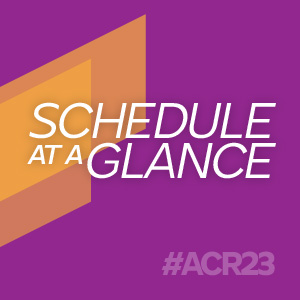Poster Session C
Systemic lupus erythematosus (SLE)
Session: (2257–2325) SLE – Diagnosis, Manifestations, & Outcomes Poster III
2316: Effect of SARS-CoV2 Infection on Disease Flares in Patients with Systemic Lupus Erythematosus: A Case-control Study
Tuesday, November 14, 2023
9:00 AM - 11:00 AM PT
Location: Poster Hall
- CM
Chi Chiu Mok, MD, FRCP
Tuen Mun Hospital
Hong Kong, Hong Kong, ChinaDisclosure(s): No financial relationships with ineligible companies to disclose
Abstract Poster Presenter(s)
Chi Chiu Mok1, Chris Cheung2, Chi Hung To3, Kar Li Kelly Chan4 and SAU MEI TSE5, 1Tuen Mun Hospital, Hong Kong, Hong Kong, 2Rutonjee Hospital, Hong Kong, Hong Kong, 3Pok Oi Hospital, Hong Kong, Hong Kong, 4Tuen Mun Hospital, Shatin, China, 5Tuen Mun Hospital, Hong Kong, China
Background/Purpose: To study the effect of SARS-CoV2 infection on disease flares in patients with systemic lupus erythematosus (SLE).
Methods: Patients who fulfilled the ACR or SLICC criteria for SLE and were followed in our rheumatology clinics were retrospectively studied. We identified patients who had documented COVID-19 (Omicron and its variants) between February and November 2022 and a group of SLE controls who did not have COVID-19 randomly matched for age, sex, and the time period of COVID-19 in a 1:2 ratio. The primary outcomes of interest were SLE flares (clinical or serological) within 90 days of SARS-CoV2 infection.SLE flares were assessed by the SELENA flare instruments, with modifications (mild/moderate or severe). The rates of SLE flares were compared between SARS-CoV2-infected SLE patients and controls.
Results: 91 SLE patients with COVID-19 (age 48.6±14.0 years; 95.6% women; SLE duration 14.2±8.3 years; 53% history of lupus nephritis) and 182 SLE controls not infected by COVID-19 (age 48.7±13.8 years; 95.6% women; SLE duration 15.2±9.0 years) were studied. Eleven of 90 (12.2%) SARS-CoV2-infected patients had serious manifestations (oxygen requirement, use of mechanical ventilator, lung infiltrates on imaging studies or admission to the intensive care unit). Patients with mild COVID-19 were treated symptomatically or oral anti-viral agents whereas those with serious COVID-19 was treated with intravenous remdesivir, dexamethasone, and/or biologic/targeted agents. One (1.1%) of our patients died and 7(7.7%) patients developed severe complications. Within 90 days of SARS-CoV2 infection, 14 (15.4%) patients developed mild/moderate SLE flares, and 2 (2.2%) patients had severe SLE flares. The incidence of SLE flares in SARS-CoV2-infected patients was significantly higher than those without (17.6% vs. 5.5%; p=0.001). The changes in anti-dsDNA and complement C3 levels, however, were not significantly different between the two groups. Among SARS-CoV2-infected SLE patients, those with clinical SLE flares had significantly lower C3 values (p=0.004) but non-significantly higher anti-dsDNA titer (p=0.32) before SARS-CoV2 infection than those without SLE flares. Herpes zoster (HZ) reactivation occurred in 2 patients (2.2%) with COVID-19, which was numerically higher than those not infected by COVID-19 (2 patients, 1.1%; p=0.48). No particular risk factors were identified for HZ reactivation after COVID-19 infection.
Conclusion: In this retrospective case-control study, clinical flares within 90 days were significantly more common in patients infected with SARS-CoV2 than age and gender-matched non-infected SLE controls.SLE patients with lower C3 levels were more likely to flare after COVID-19. The results from our study support the hypothesis for a viral trigger for disease exacerbation in SLE.
C. Mok: None; C. Cheung: None; C. To: None; K. Chan: None; S. TSE: None.
Background/Purpose: To study the effect of SARS-CoV2 infection on disease flares in patients with systemic lupus erythematosus (SLE).
Methods: Patients who fulfilled the ACR or SLICC criteria for SLE and were followed in our rheumatology clinics were retrospectively studied. We identified patients who had documented COVID-19 (Omicron and its variants) between February and November 2022 and a group of SLE controls who did not have COVID-19 randomly matched for age, sex, and the time period of COVID-19 in a 1:2 ratio. The primary outcomes of interest were SLE flares (clinical or serological) within 90 days of SARS-CoV2 infection.SLE flares were assessed by the SELENA flare instruments, with modifications (mild/moderate or severe). The rates of SLE flares were compared between SARS-CoV2-infected SLE patients and controls.
Results: 91 SLE patients with COVID-19 (age 48.6±14.0 years; 95.6% women; SLE duration 14.2±8.3 years; 53% history of lupus nephritis) and 182 SLE controls not infected by COVID-19 (age 48.7±13.8 years; 95.6% women; SLE duration 15.2±9.0 years) were studied. Eleven of 90 (12.2%) SARS-CoV2-infected patients had serious manifestations (oxygen requirement, use of mechanical ventilator, lung infiltrates on imaging studies or admission to the intensive care unit). Patients with mild COVID-19 were treated symptomatically or oral anti-viral agents whereas those with serious COVID-19 was treated with intravenous remdesivir, dexamethasone, and/or biologic/targeted agents. One (1.1%) of our patients died and 7(7.7%) patients developed severe complications. Within 90 days of SARS-CoV2 infection, 14 (15.4%) patients developed mild/moderate SLE flares, and 2 (2.2%) patients had severe SLE flares. The incidence of SLE flares in SARS-CoV2-infected patients was significantly higher than those without (17.6% vs. 5.5%; p=0.001). The changes in anti-dsDNA and complement C3 levels, however, were not significantly different between the two groups. Among SARS-CoV2-infected SLE patients, those with clinical SLE flares had significantly lower C3 values (p=0.004) but non-significantly higher anti-dsDNA titer (p=0.32) before SARS-CoV2 infection than those without SLE flares. Herpes zoster (HZ) reactivation occurred in 2 patients (2.2%) with COVID-19, which was numerically higher than those not infected by COVID-19 (2 patients, 1.1%; p=0.48). No particular risk factors were identified for HZ reactivation after COVID-19 infection.
Conclusion: In this retrospective case-control study, clinical flares within 90 days were significantly more common in patients infected with SARS-CoV2 than age and gender-matched non-infected SLE controls.SLE patients with lower C3 levels were more likely to flare after COVID-19. The results from our study support the hypothesis for a viral trigger for disease exacerbation in SLE.
C. Mok: None; C. Cheung: None; C. To: None; K. Chan: None; S. TSE: None.



